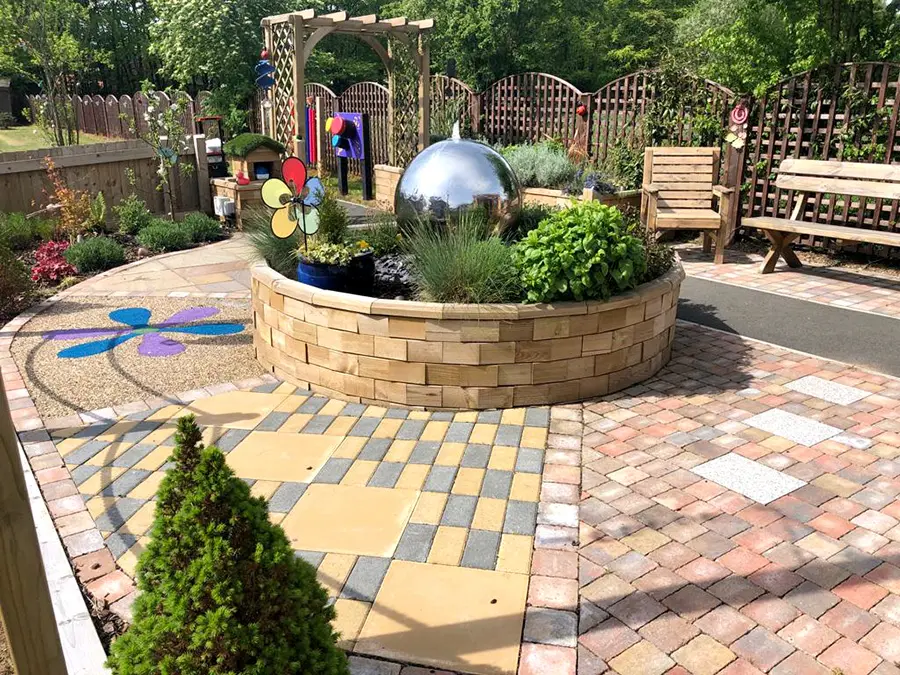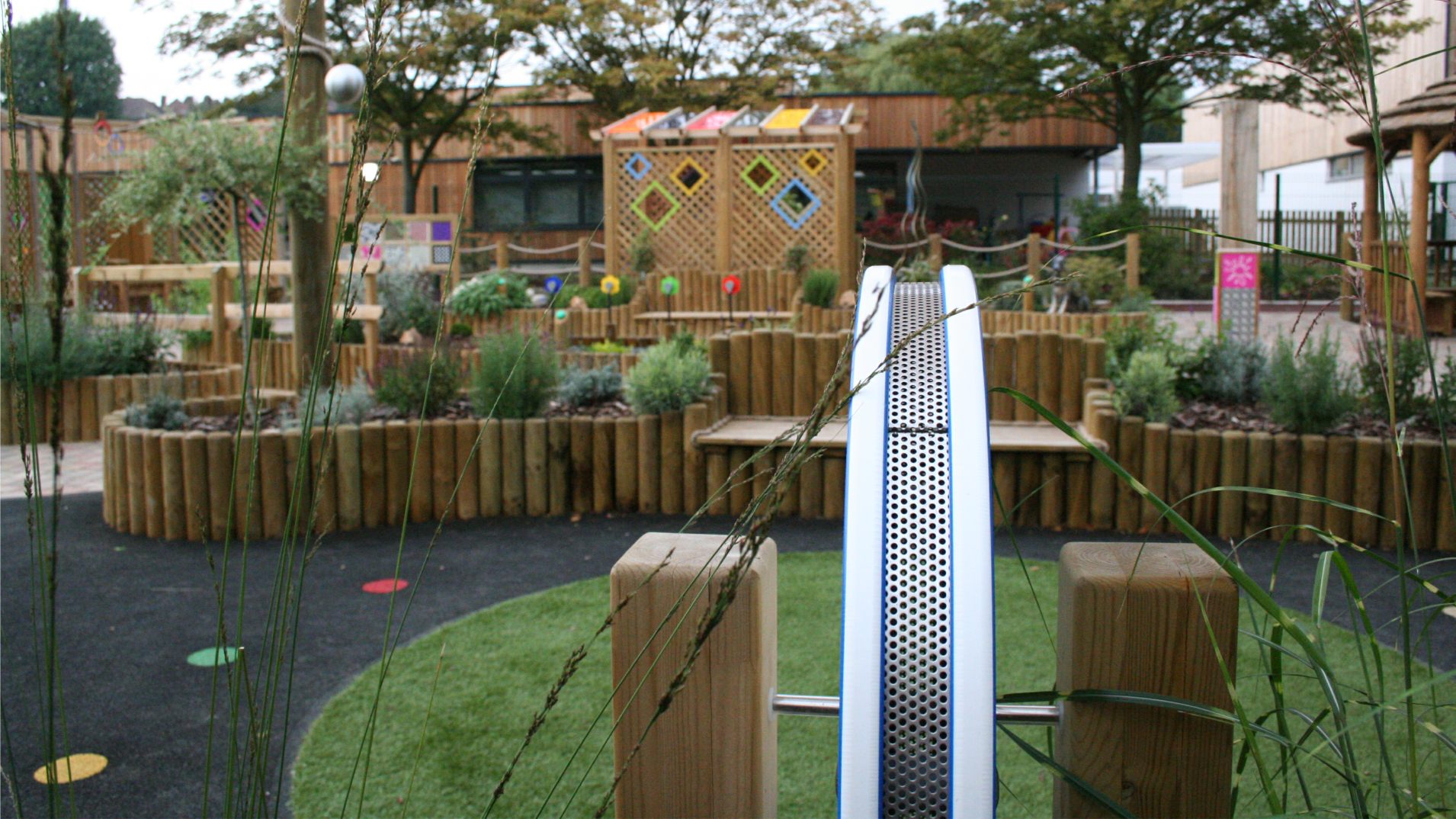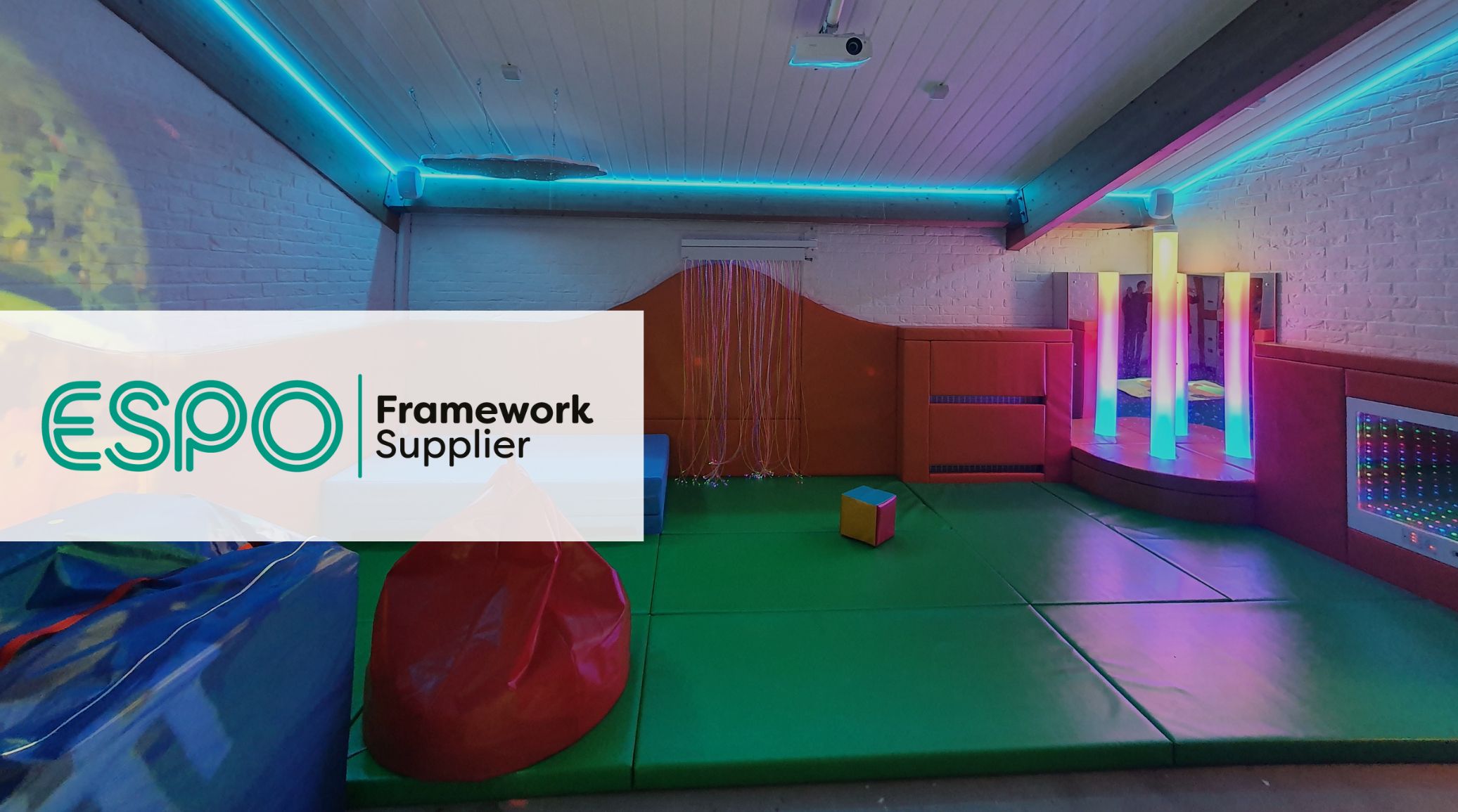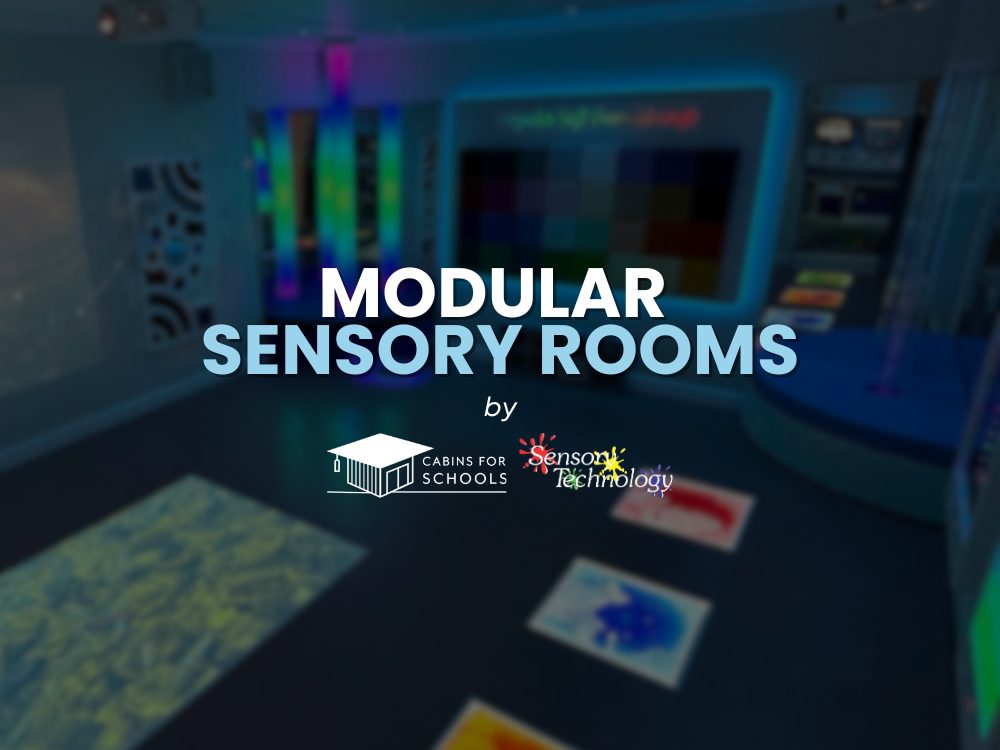Sensory gardens are a wonderful way to transform outdoor spaces into engaging, multi-sensory environments that provide stimulation, relaxation, and exploration for people of all ages and abilities. These specially designed spaces cater to a wide range of sensory needs, providing an inclusive and joyful environment for all.
In this week’s Sensory Spaces, we take a closer look at what makes a sensory garden unique, where you might find them, and some key benefits of sensory gardens for all types of users.
What is a Sensory Garden?
A sensory garden is a carefully designed outdoor space that stimulates and engages the five senses—touch, taste, sight, sound, and smell. By combining natural elements such as plants, trees, and flowers with interactive and developmental features, a sensory garden transforms a traditional outdoor area into an immersive and enriching environment.
When planning a sensory garden, it’s important to consider who the space is intended for and what benefits it should provide. The beauty of sensory gardens lies in their inclusivity, ensuring that people of all ages, needs, and abilities can explore, engage, and enjoy the space in a way that suits them best.

Who can access a Sensory Garden?
Sensory gardens are designed to be inclusive spaces that can be accessed by users of all ages, needs, and abilities. The key to making a sensory garden truly accessible lies in the features and equipment included, ensuring that every visitor can benefit from the environment in a meaningful way.
Younger Users
For the younger generation, sensory gardens provide an excellent opportunity to develop essential skills such as social interaction, cognitive development, emotional regulation, and self-reliance.
This is why sensory gardens are so popular within both mainstream and special schools, often incorporating activity-based learning in sensory gardens, allowing students to engage in tasks such as planting, digging, watering, and harvesting. This interactive approach helps to reinforce lessons dynamically and engagingly, particularly for children who may find traditional learning environments challenging.
For students with additional needs, such as autism, sensory gardens can include specialised features that encourage engagement and support concentration. Elements like textured pathways, interactive musical instruments, and calming water features provide alternative ways to process information and develop key skills in a low-pressure environment.
Older Users
There are also many users in their later stages of life who can access a sensory garden and gain the benefits. Just as they offer younger users opportunities for learning and engagement, they can also provide older individuals in Care Homes with a way to reconnect with past experiences, stimulate the senses, and encourage gentle activity.
For individuals with reduced mobility, sensory gardens create a welcome and fun change of scenery, offering an immersive environment where they can engage with nature in a safe and accessible way. Raised flower beds, accessible seating areas, and sensory features designed to be enjoyed without the need for strenuous movement help make these spaces more inclusive.
Sensory gardens are also recognised for their therapeutic benefits for individuals who have dementia. Studies suggest that being in an outdoor setting with fresh air and gentle movement can reduce feelings of agitation and distress.
According to the Alzheimer’s Society, incorporating sensory elements like specific scents or tactile experiences can provide comfort and familiarity, helping to support overall well-being.
What would you find in a Sensory Garden?
Now that we’ve explored the type of users who can benefit from sensory gardens, let’s look at some sensory garden features.
Interactive Soundboard & Interactive Animals
Interactive soundboards (on the left) and animal figures (the right) combine visual, auditory, and tactile elements to create an engaging experience for users of all ages. These features help to stimulate curiosity, encourage interaction, and support cognitive development.
The interactive soundboard allows users to press buttons to hear different animal sounds, matching them with the image. The interactive animal figure on the right allows users to hear the animal’s noises by pressing the button. This can be a fun and educational tool, particularly for younger users learning about animals or for individuals with additional needs who benefit from multisensory learning experiences.
Pergola with Coloured Roof Panels & Sensory Pathway
Coloured Roof Pergolas (pictured to the left) are a fantastic visual tool, producing various colourful effects when reflected in the sun. The colours incorporated into Sensory Pathways (pictured to the right) can be of visual benefit with bright colours, shapes and patterns. They can also include different textures for users walking across, providing an additional tactile benefit.
Both features work together to make a sensory garden more interactive, inclusive, and engaging, offering users an opportunity to experience and interact with their environment in a way that suits their sensory preferences.
Raised Planter and Wheelchair Accessible Raised Planter
Gardening is a key element of sensory gardens, and incorporating raised planters (to the left) makes it more accessible and engaging for individuals with different mobility levels. These elevated beds allow users to interact with plants at a comfortable height, reducing the need for bending or kneeling.
Beyond traditional planting, raised planters can also feature interactive elements, such as water spheres that activate with a button, providing a visual and tactile water effect. This adds another sensory dimension to the experience, making gardening more stimulating and enjoyable.
For wheelchair users, wheelchair-accessible raised planters (image to the right) ensure that gardening remains an inclusive activity. These adapted planters are designed with ample space underneath, allowing wheelchair users to comfortably reach and tend to plants without barriers.
Check out our sensory garden gallery to see more exciting features!
Where would you find a Sensory Garden?
Sensory gardens can be found in a variety of environments, providing inclusive outdoor spaces for relaxation, exploration, and engagement. Here are just a few places where sensory gardens are commonly found:
- Special and Mainstream Schools
- Care Homes
- Residential Homes
- Day Care Centres
- Hospitals
- Public & Leisure Settings
Key Benefits of Sensory Gardens
To end our exploration of sensory gardens, let’s take a look at some of their key benefits:
- Accessible to a wide range of users, and designed for people of all ages, abilities, and needs, sensory gardens provide an inclusive outdoor space that can be enjoyed by everyone.
- Encourages interaction with nature in a fun and engaging way to connect with the natural environment, promoting sensory exploration and outdoor play.
- Supports skill development in a safe and structured space to enhance core skills such as motor development, cognitive processing, and emotional regulation.
- Versatile & adaptable gardens can be incorporated into schools, care homes, hospitals, residential settings, and public spaces.
- Promotes hands-on learning in an engaging way to learn outside the classroom, using interactive elements to reinforce educational concepts.
- A sensory garden can serve as a quiet, therapeutic space where users can relax, unwind, and reduce stress.
To see more images of sensory garden features and equipment, check out our Sensory Garden Gallery.
Alternatively, contact us today to discuss how we can help bring your outdoor sensory space to life!




